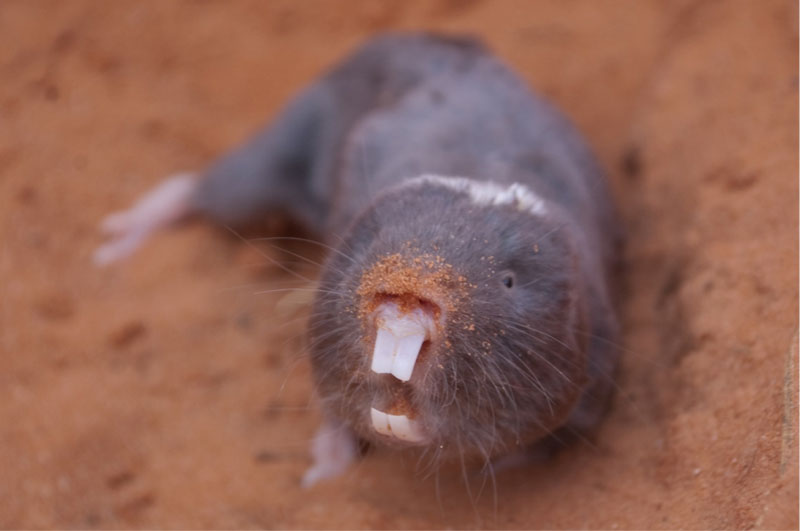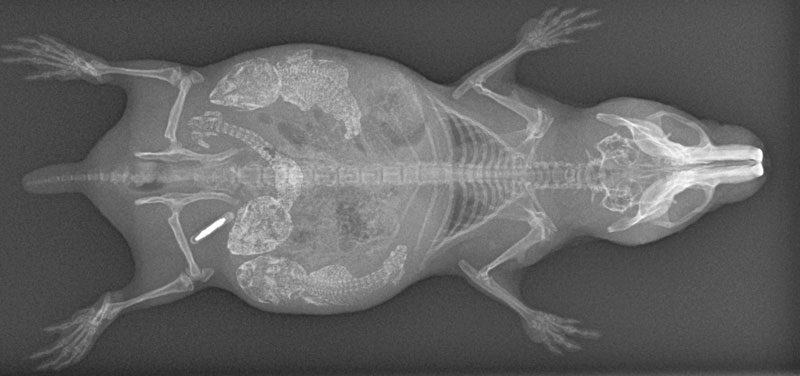In some highly cooperative animals, only one or a few females in a colony reproduce. These females, called ‘queens’, often become distinctively shaped to support high fertility. The molecular and morphological basis for such changes are well-described in social insects, but poorly understood in mammals such as the Damaraland mole-rats we studied here—one of the most cooperative mammal species described to date. In this paper, we therefore sought to ask the question: “How does a queen Damaraland mole-rat’s status, as the sole reproducing female in her colony, affect skeletal growth, shape, and integrity?” This question is important to understanding the traits and genes that have been targeted by natural selection to support the evolution of extreme cooperative behavior in mammals.

Photo credit: Jack Thorley
We found that, like eusocial insects, Damaraland mole-rats that transition to become queens experience extensive changes in gene regulation and morphology. Queen mole-rats show accelerated growth in their lumbar vertebrae (the bones in the spinal column that support the lower back), which makes them longer and likely allows them to have larger litters. However, queen mole-rats also show reduced growth potential in their leg bones and evidence of bone thinning in their femurs (the large bone in the thigh), which may increase the risk of bone fracture. Thus, unlike highly social insects, mole-rats do not seem to have escaped the costs of intensive reproduction.
Our findings are relevant to researchers working on social evolution because they show how the evolution of cooperativity is accompanied by changes in many different organs and tissues, like the skeleton. Additionally, social behavior-related morphological changes are well-known in insects, but not as well-studied in mammals. Our results provide a striking example of such changes, where the same genome can respond to social cues to produce very diverse sets of traits.

X-ray image of a mole rat skeleton (Johnston, R.A. et al. 2021. eLife 10: e65760.)
Importantly, support from the Human Frontier Science Program was essential to making this work happen: while the field site at which the mole-rats are studied is well-established, HFSP allowed us to integrate modern cell culture equipment and incubators on site, funded much of the genomic data generation, and supported the team that developed methods for shape analysis. The HFSP funds also catalyzed collaboration between Tim Clutton-Brock, Jenny Tung, Sayan Mukherjee and their teams—three PIs with distinct expertise across behavioral ecology, genomics, and statistical/computational analysis. HFSP’s support and emphasis on interdisciplinary exchange is strongly reflected in our work together.
|
HFSP award information Research Grant - Program (RGP0051/2017): Phenotypic transitions in cooperative societies: an evolutionary and molecular approach Principal investigator: Jenny Tung, Duke University, Durham, USA |


































